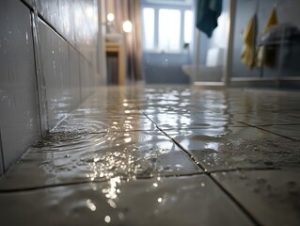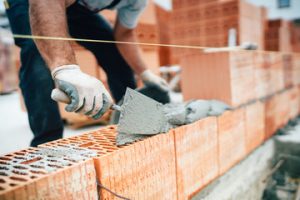Chiropractic care is a form of healthcare that focuses on the diagnosis, treatment, and prevention of mechanical disorders of the musculoskeletal system, particularly the spine. Rooted in the philosophy that proper alignment of the body’s structure can enable the body to heal itself without surgery or medication, chiropractic care has grown in popularity as a non-invasive and holistic approach to health. While many seek out chiropractic adjustments to address back pain or injury, its long-term benefits extend far beyond short-term relief.
Read on to explore the many advantages of Copper Mountain Surgical chiropractic care and how it supports long-term wellness.

Promotes Natural Healing and Pain Relief
One of the foundational principles of chiropractic care is its reliance on the body’s natural ability to heal. Rather than masking symptoms with medication, chiropractic adjustments address the root cause of discomfort by realigning the spine and restoring proper nervous system function.
Chiropractic care is commonly used to relieve:
- Back and neck pain
- Headaches and migraines
- Joint and muscle discomfort
- Sciatica and nerve pain
By correcting misalignments—known as subluxations—chiropractic adjustments relieve pressure on nerves, improve circulation, and allow the body’s systems to function more effectively. This natural form of healing reduces dependence on pain medications, many of which come with side effects or risk of addiction.
Enhances Mobility and Flexibility
Over time, poor posture, repetitive movements, injuries, and sedentary lifestyles can cause the body to lose its natural range of motion. This stiffness can limit daily activities and increase the risk of further injury.
Regular chiropractic care helps restore proper joint function and increases flexibility. Through spinal adjustments, soft tissue therapies, and rehabilitative exercises, chiropractors assist patients in regaining movement in restricted areas. Increased mobility not only improves physical function but also contributes to better posture and balance, reducing the likelihood of falls or musculoskeletal strain.
Improves Nervous System Function
The spinal column houses the spinal cord, a central part of the nervous system responsible for sending messages between the brain and body. When the spine is misaligned, it can interfere with these communications, leading to dysfunction in various parts of the body.
Chiropractic adjustments restore alignment and remove interference in the nervous system, leading to improved overall body function. Better nervous system health supports enhanced reflexes, coordination, digestion, and immune response, contributing to long-term wellness.
Supports Better Posture
In today’s digital world, many people spend hours hunched over phones, computers, and tablets. Over time, this behavior can lead to poor posture, spinal misalignment, and even chronic pain.
Chiropractors assess posture and identify areas of imbalance. By providing spinal adjustments and recommending posture-improving techniques, they help patients stand taller, sit straighter, and move more confidently. Good posture is more than just cosmetic—it reduces strain on muscles and joints, supports lung capacity, and promotes healthy circulation.
Aids in Injury Prevention and Recovery
Whether you’re an athlete, a fitness enthusiast, or someone with a physically demanding job, chiropractic care can help prevent injuries and support recovery from physical stress. By maintaining optimal alignment and flexibility, the body is better equipped to handle sudden movements, impacts, and repetitive tasks.
Chiropractic care is often used to treat sports-related injuries, workplace strain, and personal injuries such as those caused by slips, falls, or car accidents. In these cases, individualized treatment plans may include adjustments, stretching exercises, and soft tissue therapy to restore function and relieve pain.
Reduces Stress and Enhances Mental Clarity
Chronic pain and physical discomfort often take a toll on mental health. They can lead to irritability, poor sleep, fatigue, and difficulty concentrating. Chiropractic care supports mental wellness by addressing the physical sources of stress and discomfort.
Spinal adjustments help regulate the nervous system, improve blood flow, and promote the release of endorphins—natural chemicals that enhance mood. As tension is released from the muscles and joints, many individuals report feeling more relaxed and mentally clear after a chiropractic session.
Boosts Immune Function
The immune system and nervous system are closely connected. When spinal misalignments interfere with nerve signals, the immune system may not function as efficiently. By promoting better communication between the brain and the body, chiropractic care helps support immune responses, making the body more resilient to illness and infections.
Regular adjustments may help reduce the frequency and duration of common illnesses such as colds and the flu. While chiropractic care is not a replacement for proper nutrition, exercise, or hygiene, it plays a supportive role in maintaining a robust immune system.
Encourages Preventive Healthcare
One of the most compelling arguments for long-term chiropractic care is its emphasis on prevention rather than reaction. Many individuals seek care only after pain or injury occurs. However, regular visits to a chiropractor can prevent minor issues from escalating into chronic problems.
Preventative chiropractic care includes:
- Routine spinal evaluations
- Lifestyle counseling (ergonomics, nutrition, exercise)
- Postural assessments
- Early detection of musculoskeletal dysfunction
This proactive approach aligns with broader wellness goals and helps individuals maintain optimal health throughout all stages of life.
Provides Holistic and Personalized Treatment
Chiropractic care doesn’t rely on a one-size-fits-all approach. Each patient receives a personalized treatment plan tailored to their body’s needs, lifestyle, and health goals. Chiropractors take into account medical history, physical assessments, and current symptoms to design targeted therapies that address the root of the problem.
In addition to spinal manipulation, many chiropractors incorporate:
- Massage therapy
- Rehabilitation exercises
- Nutritional counseling
- Lifestyle and ergonomic advice
This holistic approach supports long-term wellness by considering the entire body and how various systems interact with each other.
Safe and Non-Invasive Option
Chiropractic care is generally considered safe when performed by a trained and licensed professional. Unlike invasive procedures such as surgery, chiropractic treatments are non-surgical and do not require medication, which reduces the risk of complications and side effects.
For those seeking alternatives to conventional medical treatments, chiropractic care offers a drug-free and hands-on option that focuses on the body’s natural healing abilities.
Chiropractic care offers a wide range of benefits that extend well beyond temporary relief from pain. By supporting spinal health, improving nervous system function, and promoting overall balance within the body, chiropractic care contributes to long-term wellness in a safe and natural way.
Whether you’re recovering from an injury, managing chronic pain, or simply looking to optimize your health, chiropractic care provides a proactive and personalized path to better living. Investing in regular chiropractic visits, along with a healthy lifestyle, can help ensure that your body remains resilient, aligned, and prepared to meet the demands of everyday life.


